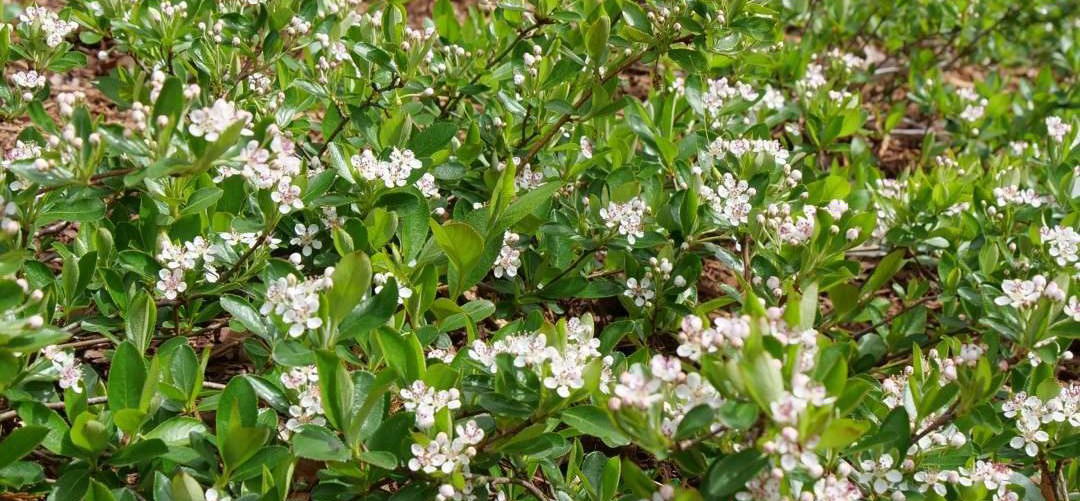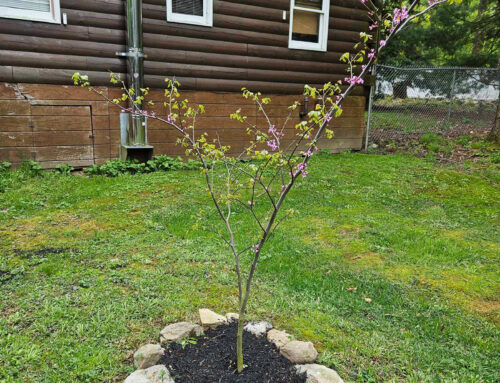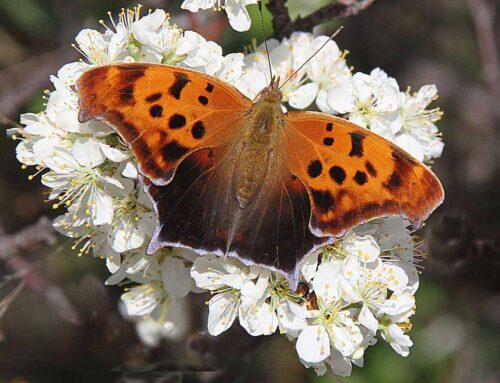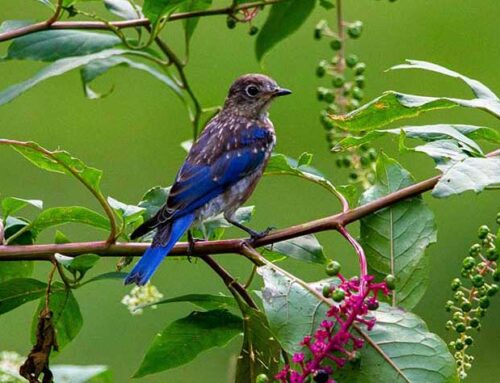Black Chokeberry “aronia melanocarpa”
Sustainable Landscaping With Native Plants
Looking to replace the non-native lilac or forsythia hedge in your yard? Consider one of the many beautiful native shrubs that we greatly under-utilize in landscaping. Aronia melanocarpa Black chokeberry is a multi-stemmed, deciduous, eastern North American shrub. It reaches 4–8 feet in height. The plant’s habit is multi-stemmed, and plants can form large, dense colonies over time, making them ideal for attracting wildlife with both nourishment and habitat.
Leaves are alternate on the stems, simple, 1–3 inches in length and 3/4–2 inches in width. They are obovate in shape (oval, but narrower at the base than near the tip), with fine and regular teeth along the edges. Their upper surfaces are dark green and lustrous, with dark glands on the upper surface of the midrib. Lower leaf surfaces are lighter green. Both surfaces are glabrous (smooth). The petioles are 1/4 inch or less in length. Leaves often grow only on the top 2/3 of plants. The leaves are bright green as they develop in spring, and they darken as the season progresses. Many plants, including some cultivars introduced for ornamental purposes, develop excellent fall color, displaying a mixture of red, yellow and orange.
Aronia melanocarpa – Black Chokeberry is graced with abundant beautiful white flowers for a few weeks in May. Black chokeberry flowers have five white petals, and numerous pink stamens. As many as 30 flowers occur in each 2 inch diameter cluster. They open in mid-May, late enough that they are not often affected by late spring frosts.
Primary pollinators are small bees. In spring, returning birds feast on the blackish-purple fruits that persist through the winter. Though extremely tart off the bush, the fruit may be used to make tasty jams and jellies. Striking autumn leaf color ranges from orange to burgundy. An excellent wildlife shrub.
Why Native Plants Matter:
 Restoring native plant habitat is vital to preserving biodiversity. By creating a native plant garden, each patch of habitat becomes part of a collective effort to nurture and sustain the living landscape for birds and other animals. Landscaping choices have meaningful effects on the populations of birds and the insects they need to survive. Native plant materials are advantageous because they:
Restoring native plant habitat is vital to preserving biodiversity. By creating a native plant garden, each patch of habitat becomes part of a collective effort to nurture and sustain the living landscape for birds and other animals. Landscaping choices have meaningful effects on the populations of birds and the insects they need to survive. Native plant materials are advantageous because they:
• Are unlikely to be invasive or overly competitive with other native plants
• Return to or maintain more normal fire intervals and fuel loadings
• Provide food sources (nectar, pollen, seeds, leaves) for native butterflies, insects, birds, and other animals
• Reduce energy consumption and pollution (limited need for mowing)
• Reduce the need for pesticides
• Enhance aesthetics and visual quality
• Protect at-risk species
• Protect biodiversity and stewardship of our natural heritage
Lincoln Landscaping Inc of Franklin Lakes
“creating eco-systems”
Lincoln Landscaping “The Natural Choice”
Mike Kolenut President & CEO
https://lincolnlandscapinginc.com
(201) 848-9699










